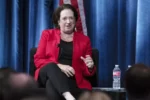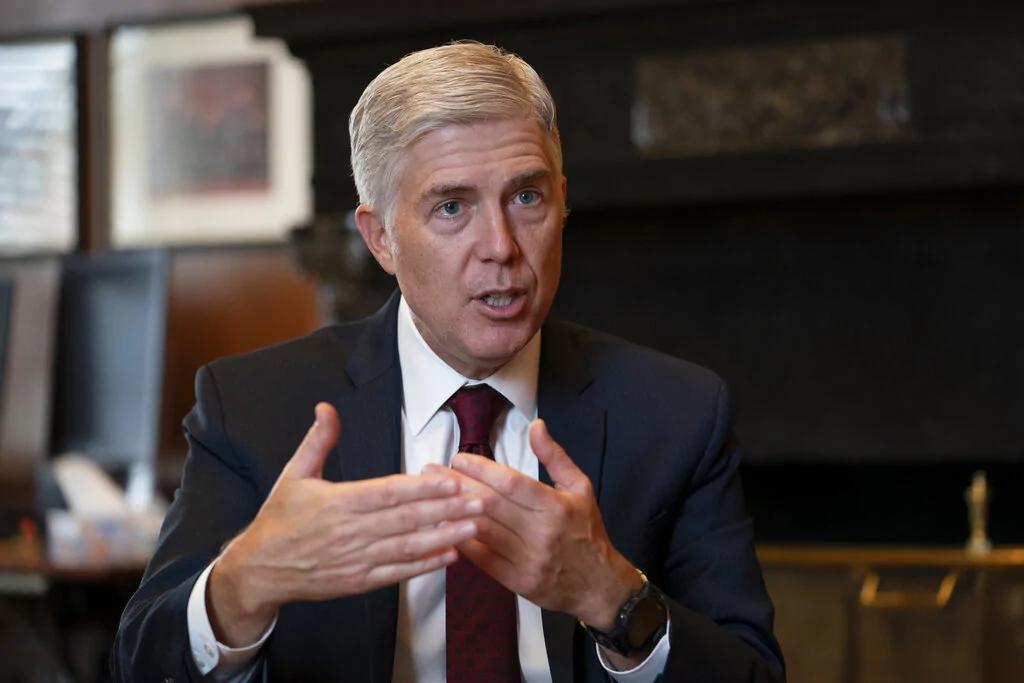
Supreme Court justices are speaking out about the rising number of emergency requests accumulating during their summer recess, many of which surround Republican-led challenges to the Biden administration‘s environmental regulations.
Speaking during an appearance at the New York University School of Law on Monday, Democratic-appointed Justice Elena Kagan suggested the Supreme Court would be better off spending less time handling a flurry of unanticipated petitions, which often result in short-term resolutions that do not fix the underlying problems brought by litigants.

“It’s a very hard problem,” Kagan said on Monday. “I don’t think we do our best work in this way.”
Kagan, who is among the three members of the left-leaning bloc on the 6-3 majority Republican-appointed court, explained that the pattern of heightened summer activity began at the tail end of the Trump administration and has persisted throughout President Joe Biden’s four years in office.
“It’s a symmetric problem: It doesn’t really matter who’s president,” Kagan said. “Government and nongovernment parties started coming to the court in ever-increasing numbers.”
The Supreme Court, in recent years, has granted certiorari, meaning it agreed to hear oral arguments and deliver a final written opinion, on around 60 cases per term. By contrast, the emergency docket operations tend to be more opaque. Parties involved in litigation, especially in cases involving contested government policies, often engage in fierce debates over which rules should be enforced while the case is being litigated in lower court. The justices typically receive brief submissions and resolve these requests with minimal explanation. However, the high court’s decisions can have swift and significant real-world effects.
What is prompting the rise in emergency docket requests?
By the end of this summer recess, which will conclude around the last week of September, the justices will have dealt with at least 25 emergency applications, according to a tally kept by Georgetown University Law Center professor Steve Vladeck. In 2021, 2022, and 2023, the range was between six and 15 applications per summer.
As it stands, the Supreme Court is toiling over three different pools of emergency applications over various Environmental Protection Agency rules, which involve more than two dozen Republican-led states challenging regulations that were pushed out by the Biden administration earlier this year.
In a recent post to his One First blog on Substack, Vladeck said the most “ripe” dispute for decision surrounds eight applications over the Biden administration’s new limits on power plant emissions, noting that it would “not be surprising” if the Supreme Court issued a ruling over that dispute by this week.
Over the past few months, the Supreme Court’s emergency docket has also included cases over separate policy disputes ranging from sex discrimination rules in schools under Title IX, voter registration procedures in the battleground state of Arizona, and Biden’s alternative yet costly plan to help student loan borrowers.
Gorsuch discusses ‘shrinking’ caseload during regular court season
As the emergency docket grows during the high court’s summer break, another trend that has prompted comment from justices and court watchers alike is the apparent “shrinking” number of cases justices are hearing between October and June of each annual oral argument session. For example, the high court was taking anywhere between 80 and 90 cases per term between 2009 and 2010, and that number has steadily dwindled to around 60 per term in more recent years.
Speaking at a conference for the U.S. Court of Appeals for the 10th Circuit last week, Justice Neil Gorsuch, one of three appointees of former President Donald Trump, suggested the decline in the high court’s caseload is due to a decline in the total number of appeals reaching the justices.

“Maybe it had something to do with the pandemic, and some lower courts were closed for long periods of time, and perhaps there’s a backlog. Maybe it has something to do with appellate waivers in criminal cases. I don’t know,” Gorsuch said. “Maybe it has something to do with the rise of technology, which makes it so much easier for all of us to know if there’s a circuit split.” Gorsuch continued, “It does seem to me that if lawyers want our court to take more cases, perhaps they need to file more petitions.”
Some veteran advocates agree more cases are needed per term
The dwindling caseload for the justices during their regular session is a phenomenon that even veteran high court litigants, such as former George W. Bush administration Solicitor General Paul Clement, hit out on earlier this summer. Clement said he thinks it would be a good thing for the high court to take on more cases per term.
“I will say my own view is that the court is taking too few cases. Now, as somebody who files the occasional cert petition, I have a vested interest in the court taking more cases, but I still think objectively, it is better for the court when they have a fuller docket,” said Clement, who was the lead counsel on the case this year that saw the justices rule 6-3 to overturn the Chevron doctrine, which had given agencies broad deference to set policy agendas under respective administrations.
Speaking before a crowd in Washington, D.C., at the Federalist Society’s 2024 Annual Supreme Court Round Up event, Clement suggested that the dearth in cases compared to recent decades could perpetuate a misleading notion that the justices are only taking on “controversial cases.”
“And if the court only takes 60 cases, that means when people look at the court, they may think, ‘Wow, all you do is, like, race, abortion, and Trump,’ and I think they wouldn’t be that far wrong if the court’s only taking 60 cases. If, on the other hand, the court’s taking closer to 80 cases, I think it’s a little easier to point to the idea that the court actually takes a wide variety of cases and is very often unanimous in deciding those cases,” Clement said.
Gorsuch said from the 10th Circuit conference last week that approximately 40% of the Supreme Court’s decisions this term were decided either unanimously or 8-1.
“To my eyes, that’s not bad for a court that’s tasked with resolving some of the most difficult legal issues in the country,” he said.
Sotomayor expressed weariness amid calls for more work
Speaking on the difficulties mounting before the high court, Democratic-appointed Justice Sonia Sotomayor said in January this year that the workload has become “bigger” and more “demanding” in recent years.
“The number of amici are greater, and you know that our emergency calendar is so much more active. I’m tired,” Sotomayor said. “There used to be a time when we had a good chunk of the summer break. Not anymore. The emergency calendar is busy almost on a weekly basis.”
While the problems discussed by Kagan, Gorsuch, and Sotomayor are reflective of their respective personal viewpoints, their comments put together show that the high court led by Chief Justice John Roberts is grappling with challenges involving its workload and public perception.
After taking the sledgehammer to the administrative state to create a “rule for the ages” on the matter of presidential immunity stemming from Trump’s indictments, the justices this year are preparing for another major term to begin in October, which will once again have them weigh controversial matters, including bans on firearm attachments, transgender procedures for minors, a death penalty case involving an alleged wrongful conviction, and much more.
CLICK HERE TO READ MORE FROM THE WASHINGTON EXAMINER
But so far, only 28 cases have been taken up for certiorari, meaning the justices are less than halfway to matching their batting average for this era of the Roberts court.
As the Supreme Court’s annual long conference at the end of September approaches, the justices will be looking to add a slew of cases to their schedule for the term. They will also issue a deluge of rejections, as the justices receive thousands of petitions each year.







